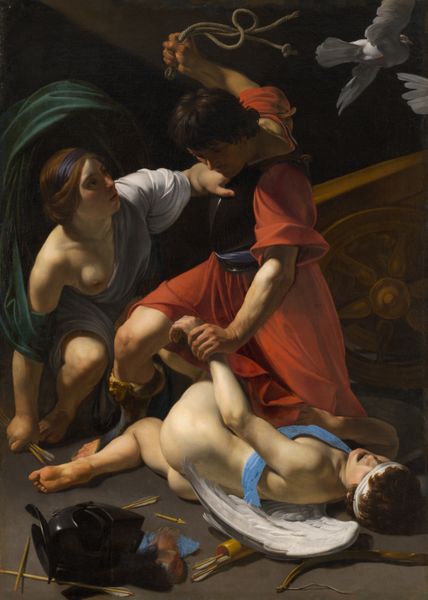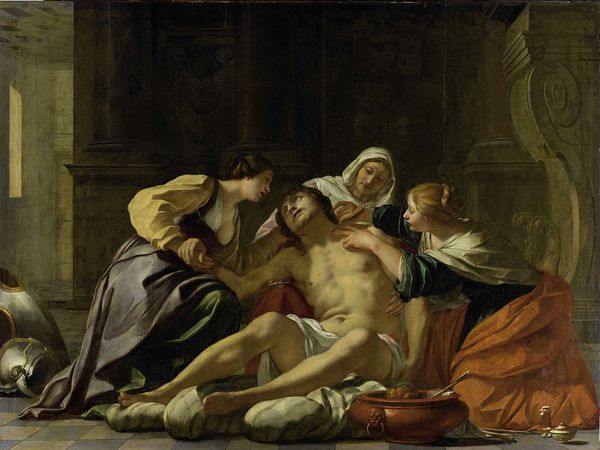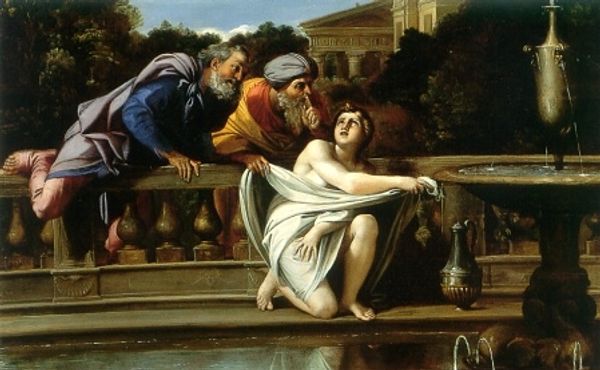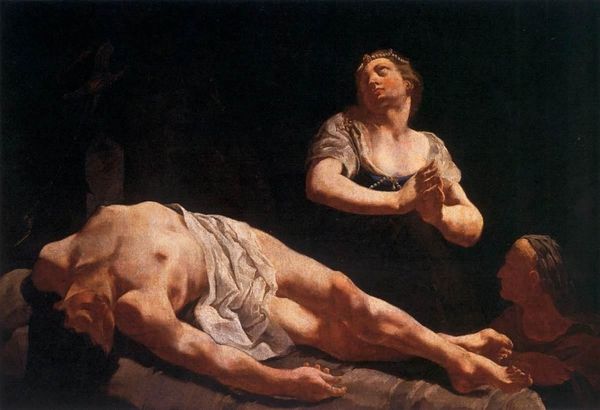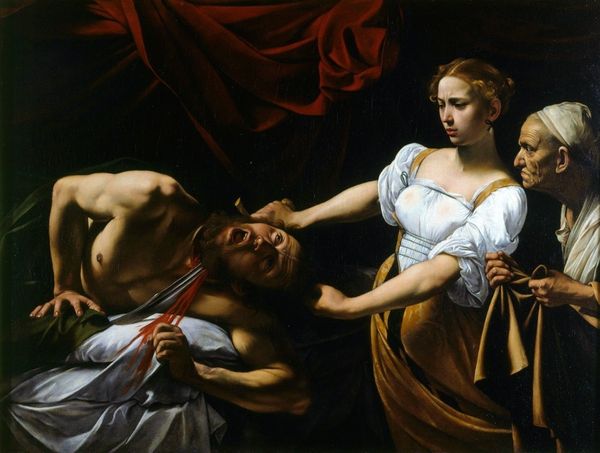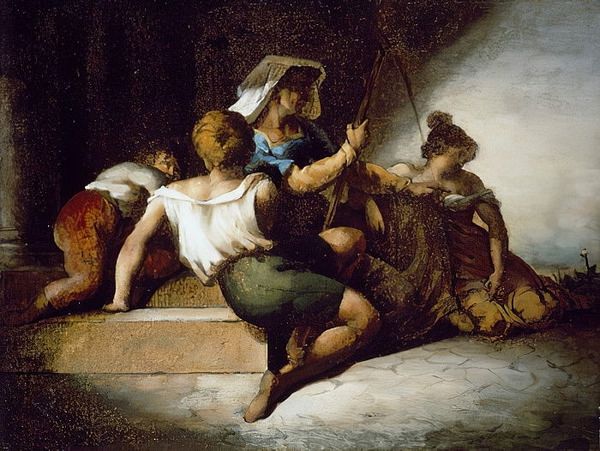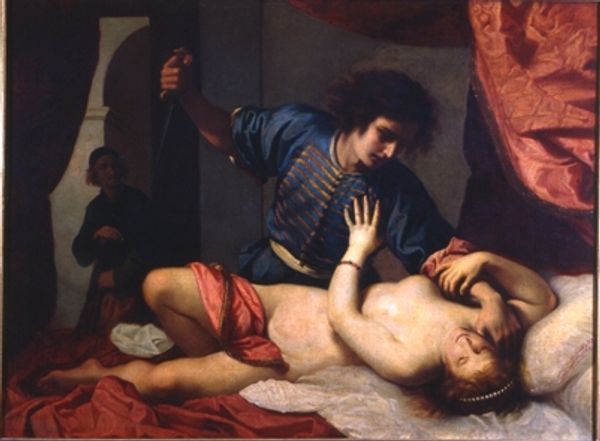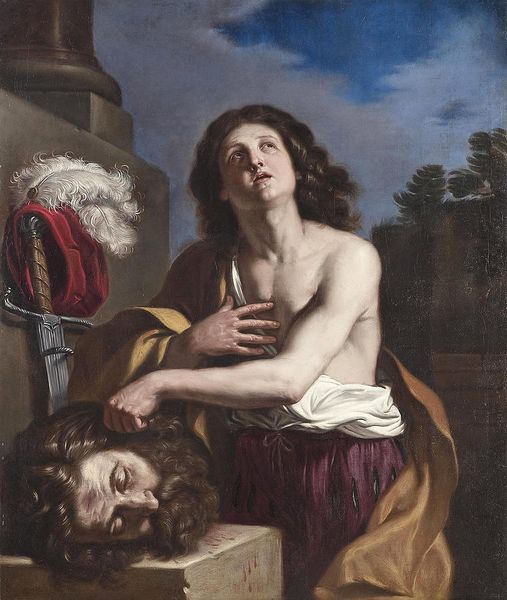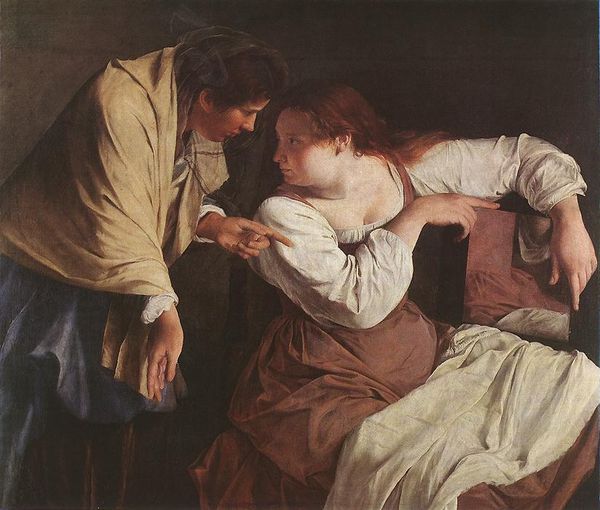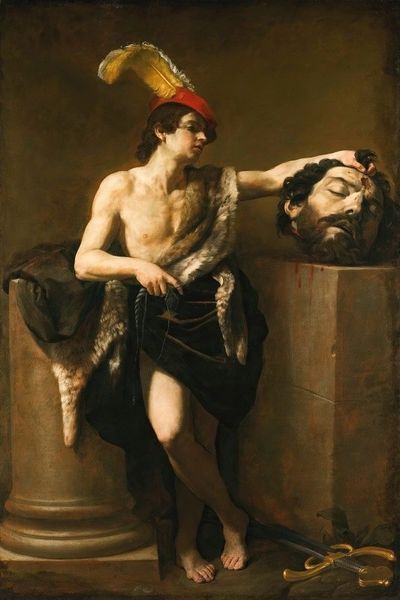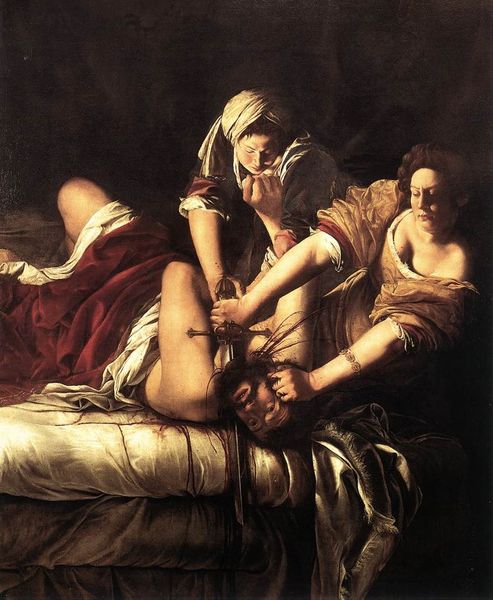
painting, oil-paint
#
narrative-art
#
baroque
#
painting
#
oil-paint
#
figuration
#
history-painting
#
italian-renaissance
Dimensions: 86 x 125 cm
Copyright: Public domain
Curator: Stepping up, we have Artemisia Gentileschi's "Jael and Sisera," an oil painting completed around 1620, currently residing in the Budapest Museum of Fine Arts. I must say, it's quite arresting, isn't it? Editor: Arresting is one word! Visually, I’m immediately struck by the almost brutal simplicity. Dark background, minimal setting, and these two figures locked in this grim ballet. The woman looks determined, almost serene. And that hammer…! Curator: Artemisia’s piece depicts the biblical story of Jael, who assassinated the general Sisera to deliver Israel from the army of King Jabin. Sisera, having sought refuge in her tent, falls into a deep sleep. And Jael… well, the painting speaks for itself. Editor: Symbolically rich too. Sleep as vulnerability, the tent as a false promise of safety… It’s a betrayal within a domestic sphere, rendered so vividly. And of course, Jael, a woman taking decisive action. What’s so fascinating here, is the disruption of ancient patriarchal models of power that is displayed. Curator: Absolutely. Many believe Artemisia, given her personal history, had a particular connection to the story, representing female strength and even revenge against male oppression. The intensity in Jael's eyes – it’s unflinching. Editor: And I can feel the influence of Caravaggio, of course! The strong tenebrism—the extreme contrast of light and dark—heightens the drama. Makes you wonder if it’s an intimate act, or a staged performance of strength. Is it about empowerment or just about survival? Curator: Well, doesn’t all empowerment boil down to survival, one way or another? Looking at her method of showing this historical story, the piece strikes me as incredibly personal for Artemisia to create; but as Iconographer, you are likely right about it carrying far larger thematic weight for other people viewing. Editor: Perhaps. The image sears itself into your memory, regardless. A stark reminder of the brutal realities lurking beneath seemingly stable surfaces. What this art makes me feel can best be explained through Carl Jung's shadow archetype. The hidden, repressed aspects of both individual and collective psyches emerging, and the confrontation this makes us think about forces the world to acknowledge parts of itself we'd often ignore. Curator: Yes. An unforgettable moment, captured by a formidable artist. Thanks for revealing deeper meanings, that really opened my mind.
Comments
No comments
Be the first to comment and join the conversation on the ultimate creative platform.
